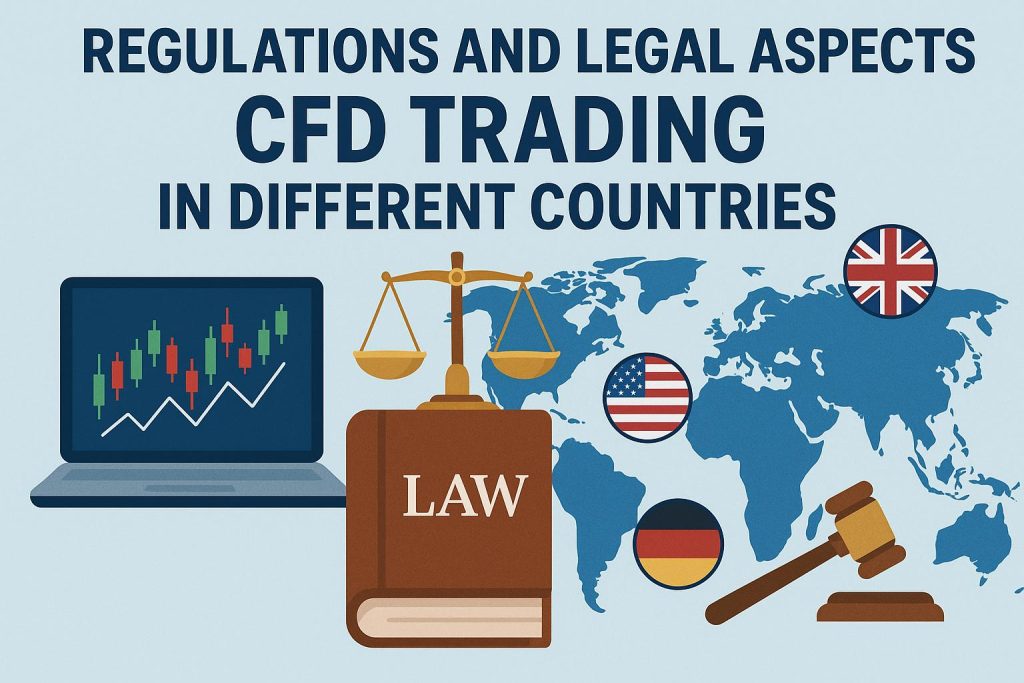Understanding CFD Trading Regulations Across Various Jurisdictions
Contracts for Difference (CFDs) serve as a prominent financial instrument in the global market, providing traders with the opportunity to engage in speculation about price movements of diverse assets without the necessity of owning the underlying assets themselves. With the rise in the popularity of CFD trading, the regulatory landscape has evolved, reflecting the varied approaches different countries utilize to manage inherent risks and safeguard investors.
United Kingdom
Within the United Kingdom, the regulation of CFD trading is under the purview of the Financial Conduct Authority (FCA), which imposes comprehensive regulations designed to protect retail traders from potential excessive losses and prevent broker malpractice. These regulations include stringent leverage restrictions, which cap leverage at a maximum of 30:1 for major currency pairs, ensuring that the traders’ losses do not exceed their deposits. Additionally, the FCA mandates negative balance protection, which is a crucial measure that ensures traders do not incur losses beyond their initial investment. Moreover, brokers are required to segregate client funds from their own operational funds, enhancing the safety and security of traders’ investments.
European Union
In the European Union (EU), the European Securities and Markets Authority (ESMA) oversees the regulation of CFD trading. Since 2018, ESMA has implemented temporary measures which have been widely adopted as permanent regulations by various national regulators within the EU. These measures revolve around limiting leverage to between 2:1 and 30:1, depending on the volatility and risk associated with the underlying asset. Emphasizing investor protection, ESMA mandates the provision of standardized risk warnings and obligatory margin close-out rules to safeguard traders from catastrophic losses.
Cyprus
Cyprus, known for its appeal to CFD brokers, falls under the jurisdiction of the Cyprus Securities and Exchange Commission (CySEC). While adhering to ESMA guidelines, CySEC enhances market transparency and insists on rigorous licensing requirements for brokers within the nation. Brokers operating in Cyprus are expected to uphold the highest regulatory standards, ensuring the protection of investors and fostering trust within the financial markets.
Australia
In Australia, CFD trading is governed by the Australian Securities and Investments Commission (ASIC). ASIC’s regulatory framework includes recent modifications aimed at bolstering retail investor protection. The new measures primarily involve reducing leverage limits to a maximum of 30:1 on prominent currency pairs. Furthermore, ASIC requires that brokers provide negative balance protection to clients, minimizing the risk of substantial losses in volatile market conditions. Such a robust approach aims to mitigate the inherently high-risk nature of CFD trading, especially for traders who lack substantial experience in the financial market.
United States
In contrast, the regulatory environment for CFD trading in the United States is notably stringent, with such trading effectively prohibited. Both the Commodity Futures Trading Commission (CFTC) and the Securities and Exchange Commission (SEC) have deemed CFD trading unsuitable, largely due to its speculative nature and the high degrees of leverage often associated with these financial instruments. As a result, U.S. residents cannot legally engage in CFD trading through domestic brokers. However, some venture into offshore trading opportunities, despite the accompanying regulatory and financial risks, highlighting a significant regulatory difference compared to other regions.
Japan
Japan’s Financial Services Agency (FSA) governs CFD trading within the country, emphasizing the protection of investors through stringent leverage restrictions. The regulatory focus in Japan reflects a particularly cautious approach, with a leverage cap of 10:1 for currency CFDs. Furthermore, the FSA ensures that brokers provide transparent risk warnings to clients, while also mandating the separation of client funds from brokerage operational accounts. These measures collectively serve to promote a secure trading environment, aligning with Japan’s stringent financial regulatory standards.
Conclusion
The regulation of CFD trading manifests with considerable diversity across the globe, encapsulating varied approaches taken by countries based on their individual risk management philosophies and investor protection priorities. Jurisdictions such as those in the EU and the UK focus significantly on implementing leverage restrictions and enforcing comprehensive investor protection measures. In contrast, the United States opts for a more restrictive stance, choosing to prohibit CFD trading entirely within its borders.
For traders, gaining an in-depth understanding of the regulatory frameworks applicable in their regions becomes essential for making informed trading decisions. Additionally, selecting brokers that operate under well-regulated jurisdictions serves as a prudent step toward ensuring legal protection and securing financial interests in their trading journey. Engaging with reputable brokers not only enhances transparency but also reinforces the structural integrity of the global CFD trading market, promoting a stable and secure trading ecosystem.
This article was last updated on: September 11, 2025







